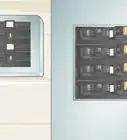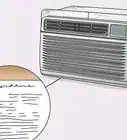wikiHow is a “wiki,” similar to Wikipedia, which means that many of our articles are co-written by multiple authors. To create this article, 15 people, some anonymous, worked to edit and improve it over time.
There are 9 references cited in this article, which can be found at the bottom of the page.
wikiHow marks an article as reader-approved once it receives enough positive feedback. In this case, 90% of readers who voted found the article helpful, earning it our reader-approved status.
This article has been viewed 306,324 times.
Learn more...
AFCI or "Arc Fault Circuit Interrupters" are the latest in electrical safety devices for dwellings. AFCI standards were introduced in the 1999 NEC (National Electrical Code) and are required in new dwelling construction and when installing, extending or updating new circuits in an existing dwelling, or when replacing receptacles located in designated locations. AFCI and GFCI protection devices may look similar, but perform very different functions to protect against different dangers. Continue reading to learn where and when AFCI protection must be provided.
Steps
-
1Determine the structure type. If circuits are installed in a space for use other than a dwelling unit, AFCI is not required (commercial and industrial spaces are not required to have AFCI protection). AFCI protection is required only in dwelling units (apartments, homes, manufactured homes and mobile homes), in "dormitory units" and in hotel/motel guest rooms.
- Historically, electrical fires in branch circuit wiring accounted for nearly one third of the fires in dwellings in the USA.
-
2Identify voltage, current and circuit destinations. "All 120 volt, single-phase, 15- or 20-amp branch circuits supplying outlets [includes both lighting outlets and receptacle outlets] and devices [including switches] installed in dwelling unit kitchens, family rooms, dining rooms, living rooms, parlors, libraries, dens, bedrooms, sunrooms, recreation rooms, closets, hallways, laundry rooms, or similar rooms or areas shall be protected" by a listed arc fault circuit interrupter, with limited exceptions, as noted below. This means that nearly every habitable space in new homes, other than listed below, are required to have this protection.[1]
- Any existing circuits that are modified, replaced or extended in or into those area are also required to have AFCI protection installed, if they extend it by more than six (6) feet or add an outlet or device. [2] When an existing receptacle outlet is replaced on a branch now required to have AFCI protection, it shall be provided with AFCI protection.[3]
- All 120-volt, single-phase, 15- and 20-ampere branch circuits supplying outlets installed in dormitory unit bedrooms, living rooms, hallways, closets, bathrooms and similar rooms shall be protected" by AFCI devices. [4]
- Circuits that provide more than 20 amps or more than 120 volts (208 / 240 volts circuits) are also exempted from AFCI protection. That means all double-pole (208 or 240 volt) appliances such as: electric ranges, water heaters, clothes dryers, permanently installed electric heaters (baseboard and blower types), artesian well pumps, etc. are exempt as are those that require a single pole circuit breaker greater than 20 amps. Note that if a "permanently installed electric heater" is supplied by 120 volts on a 15- or 20-Amp circuit, it would not be exempt from AFCI protection, under this rule.
- Circuits supplying less than 120 volts (e.g., 24-volt control wiring, 12-volt lighting, telephone- or TV-signal wiring) are also exempt from AFCI protection.
Advertisement -
3Determine if a location or type-specific exemption applies.
- Absent from the list of spaces that require AFCI protection are: bathrooms, outdoors, unfinished basements, crawl spaces, attics and garage spaces, to name a few.
- Kitchens and laundry areas of manufactured or mobile homes are no longer exempt. [5]
- Additional AFCI considerations apply to solar-power systems and power-grid interconnection systems.
- Some heat and smoke alarm systems are prohibited from being connected to GFCI or AFCI circuits. [6] An exception for AFCI may apply where permitted by code, such as when using certain metallic wiring methods. [7]
- The "National Fire Alarm Code" does not exempt "smoke alarms", but does require "a secondary power source" for smoke alarms powered by circuits protected by GFCI or AFCI devices. [8] Locally adopted codes may differ.
-
4Choose a method of providing protection. AFCI protection is provided by either an AFCI circuit breaker installed at the electrical panel, or by a receptacle specifically identified as providing arc fault protection. Both the circuit breaker and receptacle are installed similar to the GFCI circuit breakers and receptacles that are present in many homes already. The circuit breaker method protects the entire circuit, while the receptacle protects only from the point of installation on the circuit, to the end of the circuit. A caveat for the receptacle method is that it is only considered meeting the code requirements if the portion of the circuit between the electrical panel and the AFCI receptacle is installed in pipe or armored cable and all boxes in the circuit must be metal (the common practice of using plastic / fiber boxes or romex cables would prohibit this solution).
- Some appliances are also required to have their own integral AFCI or GFCI protection, including air conditioners, refrigerators, freezers, water coolers and beverage dispensers. [9]
-
5Provide both AFCI and GFCI protection where required. Any required GFCI protected receptacle(s) that are installed in a location that additionally requires AFCI protection (see list above), will have to be AFCI protected as well. It is possible to install an AFCI receptacle on a circuit protected by GFCI circuit breaker to satisfy the requirement but only if at least the portion of the circuit between the panel and the AFCI receptacle is installed in metallic pipe or metal-armored cable and all boxes in the circuit must be metal (the common practice of using plastic / fiber boxes or Romex® cable would prohibit this solution). In this case, install an AFCI circuit breaker and a GFCI receptacle. The pipe, armored cable, metal box, etc. limitations on AFCI receptacles are not applicable to GFCI receptacles. Some manufacturers offer circuit breakers that provide both AFCI and GFCI protection in a single package.
-
6Add AFCI protection voluntarily. Existing installations are not required to upgrade to AFCI protection. In other words, homes built prior to the first effective date of bedroom AFCI requirements (in 2002) are not required to have any AFCI devices. In homes without AFCI devices in the locations required by the current code, the ultimate protection would be to provide AFCI protection throughout the dwelling (except for circuits that have problems with AFCI).
- Replace all existing single pole 15 and 20 amp circuit breakers (and any double pole 15 and 20 amp circuit breakers that supply circuits with shared neutrals that provide two 120 volt circuits), or replace the first receptacle on a circuit to an AFCI type to add this protection.
- Use AFCI circuit breakers to add arc fault protection to the entire length of existing circuits. This is simply a matter of locating the circuit's hot wires (black, red or blue that are connected to the circuit breaker) and the circuit's neutral (white) wire and replacing the circuit breaker in the panel with the AFCI type. AFCI breakers, like the GFCI counterparts, have a coiled neutral wire that must be connected to the electric panel's neutral bus. The hot and neutral circuit wires will all connect directly to the AFCI circuit breaker, and protects the entire circuit from arc faults.
- Use AFCI receptacles to provide protection to the circuit only from the point at which the receptacle is installed. Replace the first non-GFCI receptacle in the circuit with the AFCI receptacle and connect the wires from the panel to the LINE terminals and the wires that continue to the rest of the circuit to the LOAD terminals. Depending on wiring methods used during construction, this method may not satisfy the requirements of the code. The AFCI receptacles were much more popular prior to 2005 code, when this protection was required only in bedrooms. Since then, the code expanded the requirement to include significantly more locations in the dwelling, it seems that manufacturers have begun to produce the circuit breaker instead. As a result, AFCI receptacles may be more difficult to obtain.
Community Q&A
-
QuestionAfter installing the modifications, where do I install the AFCIs?
 SteveTop AnswererAFCI circuit breakers need to be installed in the circuit breaker or service panel. If your dwelling has armored cable or pipe from the service panel to the first box, and that first box is constructed of metal (not plastic or fiber), you can remove the receptacle and replace it with an AFCI receptacle. If the first box does not contain a receptacle (is a switch or ceiling box of a fan or light) it will not be possible to install a receptacle in those boxes and will require that an AFCI breaker be installed in the electric panel instead.
SteveTop AnswererAFCI circuit breakers need to be installed in the circuit breaker or service panel. If your dwelling has armored cable or pipe from the service panel to the first box, and that first box is constructed of metal (not plastic or fiber), you can remove the receptacle and replace it with an AFCI receptacle. If the first box does not contain a receptacle (is a switch or ceiling box of a fan or light) it will not be possible to install a receptacle in those boxes and will require that an AFCI breaker be installed in the electric panel instead. -
QuestionHow I replace the arc fault with regular breaker?
 Community AnswerBe careful, regular breakers do not monitor the neutral wire from that circuit. You must remove the neutral from the neutral bar and land it on the arc fault breaker so that it will now monitor the current peaks, and will shut the circuit off then it senses a problem.
Community AnswerBe careful, regular breakers do not monitor the neutral wire from that circuit. You must remove the neutral from the neutral bar and land it on the arc fault breaker so that it will now monitor the current peaks, and will shut the circuit off then it senses a problem. -
QuestionI would like to home run a 12/2 cable to a switch box controlling a chain of outlets. From this box I'd like to run 14/3 to switch control the bottom half specific outlets. Per code, can the home run be connected to an AFCI? Have I violated any rules with this scheme?
 Community AnswerIt depends on local ordinances. Here in San Antonio, what you just described would be a violation of our local code, because nothing smaller then #12 wire is acceptable. Just remember, a 20 amp breaker is for wire rated for 20 amps, hence the #12. If the code allows #14 wire then you must protect it with a 15 amp breaker.
Community AnswerIt depends on local ordinances. Here in San Antonio, what you just described would be a violation of our local code, because nothing smaller then #12 wire is acceptable. Just remember, a 20 amp breaker is for wire rated for 20 amps, hence the #12. If the code allows #14 wire then you must protect it with a 15 amp breaker.
Warnings
- AFCI devices (and GFCI devices for that matter) that constantly trip or trip soon after resetting indicate a defective AFCI (or GFCI) device or a potentially serious problem in the dwelling's wiring. If replacing the device does not solve to tripping issue, call an electrician as soon as possible to locate and remove the fault source. Left unresolved, fire could eventually result. Simply removing or bypassing the required AFCI or GFCI protection is generally unacceptable.⧼thumbs_response⧽
- A GFCI device on the other hand, is a high-speed, precision balancing device. In most circuits, the amount of current flowing on the black wire to a device should flow back on the white wire. If there is a difference of as little as .005 (5 thousandths) amps between the hot and neutral wire, this current is presumed to be "leaking" through the device case, handle, or in the case of a 3-wire cord-connected appliance or tool, safety ground. Since it is possible that a user of the device is in contact with this leak current, the GFCI opens the circuit within a fraction of a second from when the leak current is first detected and it stays open until manually reset. This helps to prevent serious burns or injury to the user. The AFCI is designed to prevent loss of property and life due to fire, while the GFCI is designed to prevent shock or serious injury to individuals. It should evident why both types of protection are highly desirable.⧼thumbs_response⧽
- AFCI and GFCI are two similar looking devices with completely different purposes and are not interchangeable. An AFCI detects arcing in circuits. Pinched conductors, broken or loose connections, etc. that can contribute to the type of arcing that can result in fires, have very specific arcing characteristics or "signatures". The arcing seen in many motor operated devices (such as a drill or vacuum cleaner), or those seen when a fluorescent light starts, should not trip an AFCI device, as this type of arc does not have the signature (duration and amplitude) type that causes fires.⧼thumbs_response⧽
- Installing new wiring, circuits, etc. will almost always require a wiring permit and inspection, if not also a licensed electrician. Do not skip this important step of electrical work.⧼thumbs_response⧽
References
- ↑ NFPA 70 (2014): 210.12(A).
- ↑ NFPA 70 (2017): 210.12(D). Earlier homes generally must comply with the electrical code that was effective at the time of construction or remodels.
- ↑ Replacement Receptacles, NFPA 70 (2017): 406.4(D)(4). Note similar requirements for receptacles in locations requiring GFCI protection. Id. at (D)(3) and "tamper resistant" at (D)(5).
- ↑ NFPA 70 (2017): 210.12(B).
- ↑ NFPA 70 (2017): 550.25(B).
- ↑ Power Source Requirements for Non-power-limited fire alarm systems, NFPA 70 (2014): 760.41(B).
- ↑ NFPA 70 (2014): 210.12 (A) "Exception".
- ↑ NFPA 72 National Fire Alarm and Signalling Code (2013): 29.6.3(5).
- ↑ NFPA 70 (2014): 440.65. Air conditioners have required AFCI or GFCI devices in their power supply cords since 2005.
-Step-1-Version-2.webp)
-Step-2-Version-2.webp)
-Step-3-Version-2.webp)
-Step-4-Version-3.webp)
-Step-5-Version-2.webp)
-Step-6-Version-2.webp)

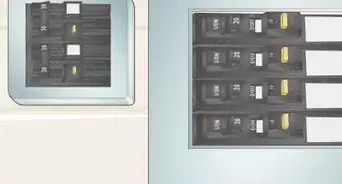
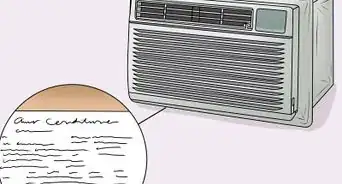







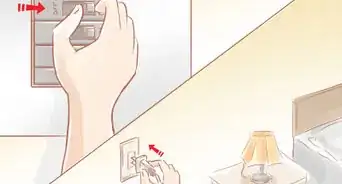
-Electric-Shock-Step-8.webp)












